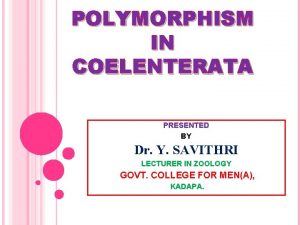Isolated Polymorphic Ventricular Tachycardia in a Pediatric Patient

- Slides: 1

Isolated Polymorphic Ventricular Tachycardia in a Pediatric Patient: An Unusual Presentation of Acute Myocarditis Natalie Shwaish MD, Bethany Runkel MD, Lindsey Malloy-Walton DO Children’s Mercy Hospital, Kansas City, MO Background Figures The clinical presentation of pediatric myocarditis has a wide spectrum from chest pain with a minor troponin elevation to severe heart failure. While patients with myocarditis are known to be at risk for arrhythmia, it is uncommon as an isolated presentation. Case A 10 month old with a history of a small right ventricular diverticulum presented with 1 day of increased work of breathing and lethargy. Upon arrival to the CICU, her cardiac rhythm was sinus with frequent polymorphic ventricular ectopy. An echocardiogram showed normal left ventricular size and systolic function, and mildly dilated right ventricle with mildly decreased systolic function. She was intubated and sedated. Over the course of two hours, her rhythm evolved into multiform ventricular tachycardia with ST-segment depression. Baseline EKG v Discussion The differential diagnosis for polymorphic VT in pediatrics includes • Genetic channelopathy (SCN 5 A mutation)1 • Metabolic derangement • Ischemia • Myocarditis • Heart failure • Coronary artery disease • Idiopathic While myocarditis usually affects cardiac function as well, it is possible to have isolated arrhythmia. Endomyocardial biopsy may be useful in making the diagnosis. Clinical Decision Making • She was treated with lidocaine, without effect. • Amiodarone resulted in a slow junctional rhythm and subsequent decreased perfusion and lactic acidosis. • She was placed on VA ECMO support. • Her rhythm progressed to severe bradycardia. • Dual chamber epicardial temporary pacing wires were placed, but were unable to capture. • Cardiac catheterization was performed for balloon atrial septostomy. Angiography showed normal coronary arteries. • Endomyocardial biopsy showed severe acute myocarditis with patchy interstitial and subendocardial fibrosis. • A temporary transvenous ventricular pacing lead was placed via the left femoral vein and was able to capture. • She was weaned from ECMO after 10 days. • Her sinus node function returned and ectopy ceased, however she had persistent complete heart block with no ventricular escape rhythm. • 17 days after presentation, a dual chamber permanent epicardial pacemaker was placed with good capture. • Subsequent arrhythmia and cardiomyopathy genetic panels were negative. • She was discharged home after 35 days of admission. • At one year follow-up, she continues to have complete heartblock with no ventricular escape rhythm. References v Telemetry 2 hours after presentation 1. Laurent SS, et al. Multifocal ectopic Purkinje-related premature contractions: a new SCN 5 A-related cardiac channelopathy. J Am Coll Cardiol. 2012; 60(2): 144 -56. 2. Peretto G, Sala S, Rizzo S, Palmisano A, Esposito A, De Cobelli F, Campochiaro C, De Luca G, Foppoli L, Dagna L, Thiene G, Basso C, Della Bella P. Ventricular Arrhythmias in Myocarditis: Characterization and Relationships With Myocardial Inflammation. J Am Coll Cardiol. 2020; 75(9): 1046 -1057.

